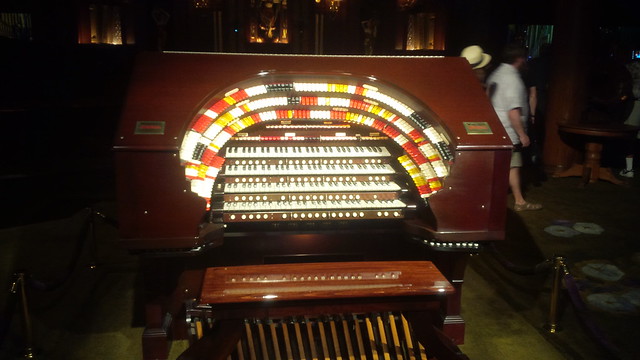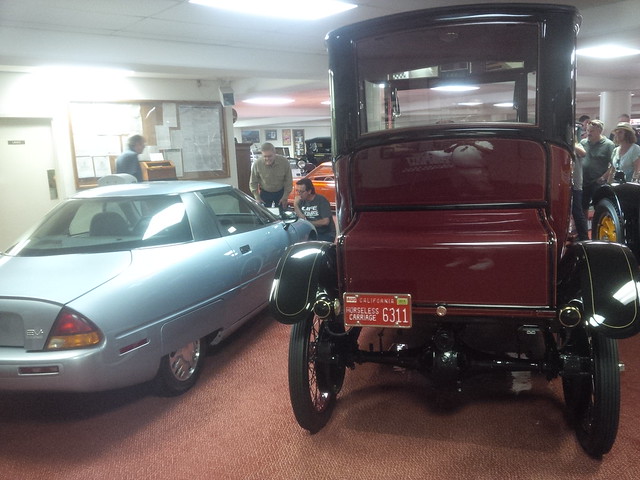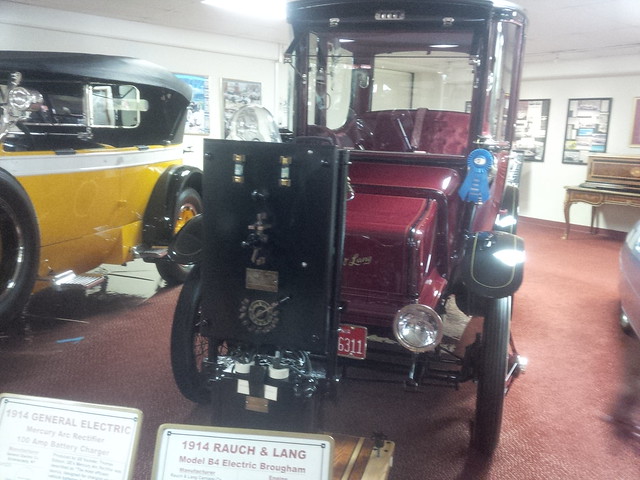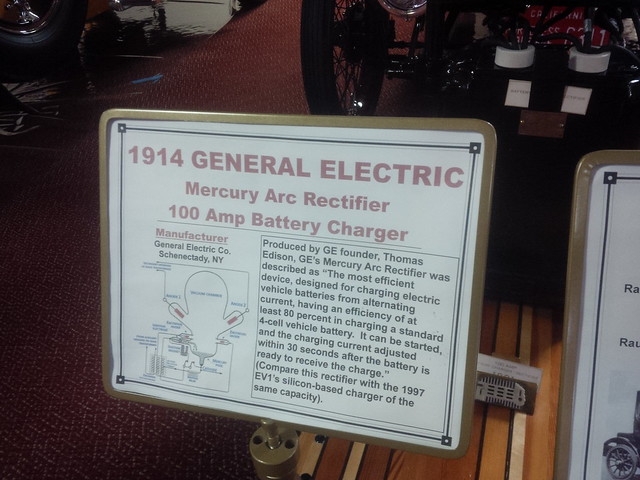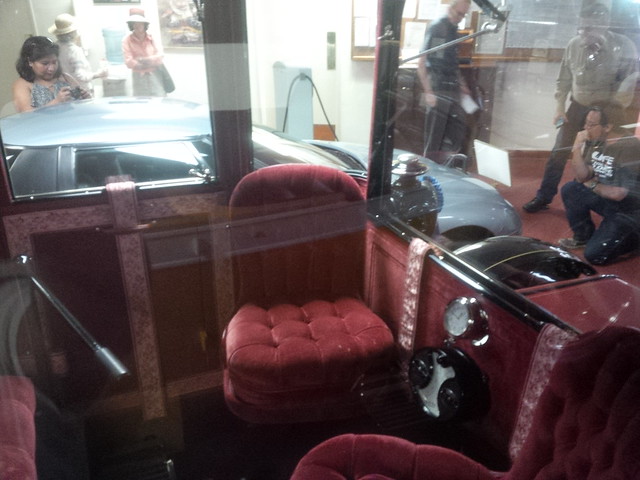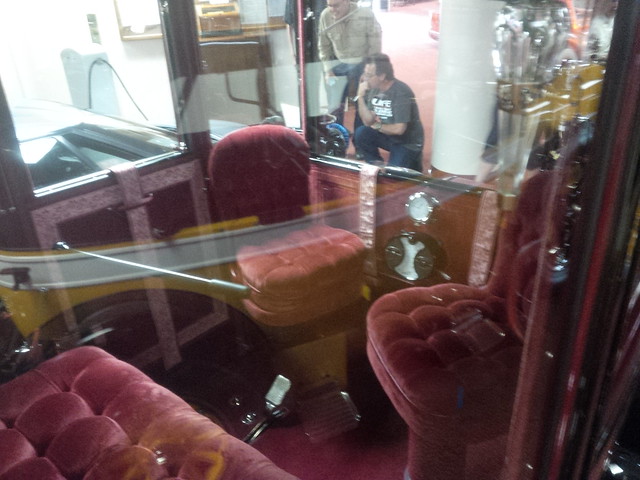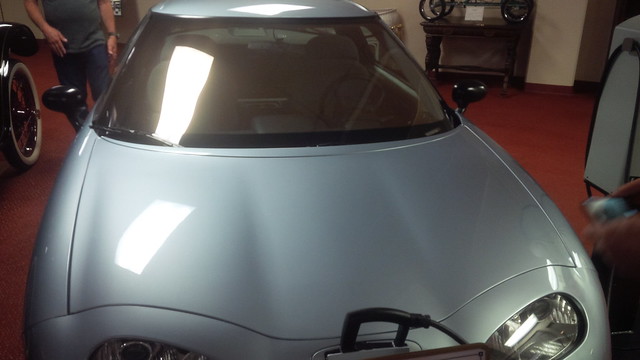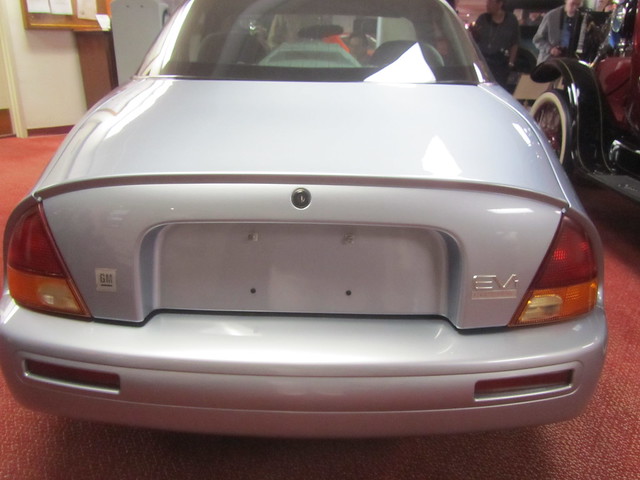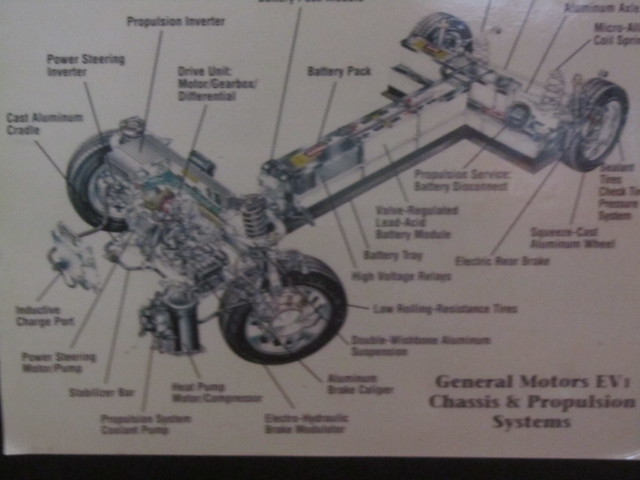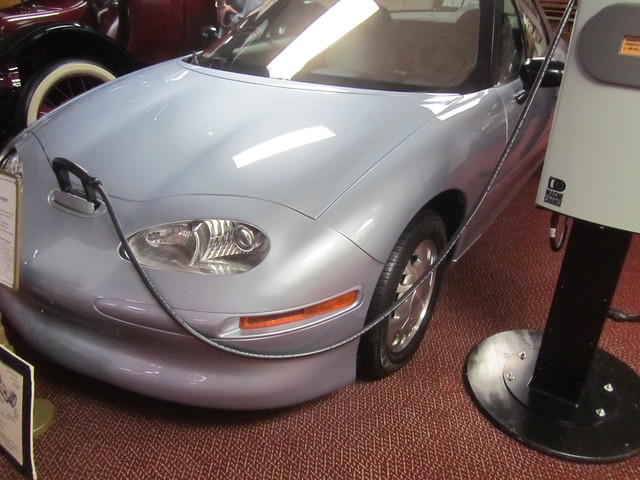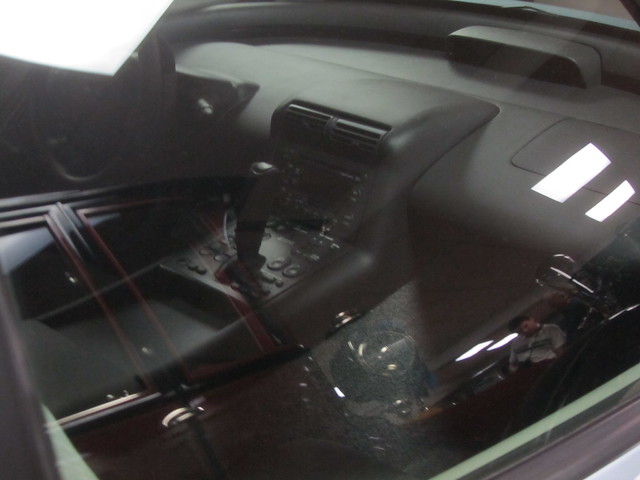This past weekend, my wife and I joined our fellow members of the Orange County Tesla Club on a visit to the Nethercutt Museum and Collection in Sylmar (Los Angeles), CA. [SIDE NOTE: For those not from Southern California, the city of Los Angeles is the largest city in Los Angeles County and within the city there are distinct neighborhoods that have their own identities, but are part of the city of Los Angeles. Hollywood is an example of such a neighborhood, as is Sylmar. West Hollywood, on the other hand, is its own city. As is Long Beach, where the Formula E race will be held on Saturday, April 4, 2015. (which is why I wrote Sylmar with (Los Angeles) in parentheses, that’s my own editorial on it, and not convention.) Now back to our regularly scheduled programming.]
The Nethercutt family are the founders and heirs to the Merle Norman cosmetic company and have built an impressive collection of automobiles and other “mechanical art”. The OC Tesla Club has been itching to have longer drives for our group outings and this venture into Los Angeles (City and County) was just one such drive.
So, the day was meant to appreciate the company of fellow Tesla enthusiasts and appreciate the Nethercutt Museum and Collection. As with most automobile museums, I was prepared to view beautiful and restored relics of the past… ICE cars.
Well, I was in for a surprise and a treat. (The benefits of not really paying attention to the marketing brochures and online information about what was in store for me at the Museum and Collection. The only thing that stuck to my head from the materials was the restored locomotive and Private Train Car in the back, and that was pretty much it.)
As was pointed out by some of my fellow OC Tesla Club members, as impressive as the car collection is, the automated music collection was even more impressive. Unfortunately they didn’t allow us to record the audio or video of the event, but here are a few photos from that
This piano entertained us while we strolled the car collection:
and the piece de resistance was this automated/programmable pipe organ that came from a movie theater (for silent films) from Denver
You can see the rest of the visit in my flickr album.
But what does the Nethercutt have to do with EVs? Well…
I love to play “EV Spotting” and in the guided tour portion of our visit (at the Collection this time, and not at the self-guided museum section) in the ground level of the visit were TWO EVs!
Front view
Back view
Most EV junkies would recognize the more modern EV as the pre-cursor to this generation of EVs and focus of the documentary, “Who Killed the Electric Car?” (and the movement which spawned Plug in America, the 1997 GM EV1. The other one is older and not as well known. The 1914 Rauch & Lang Model B4 Electric Brougham.
Both vehicles were shown with their respective chargers connected to the vehicle in the Collection.
Rauch & Lang
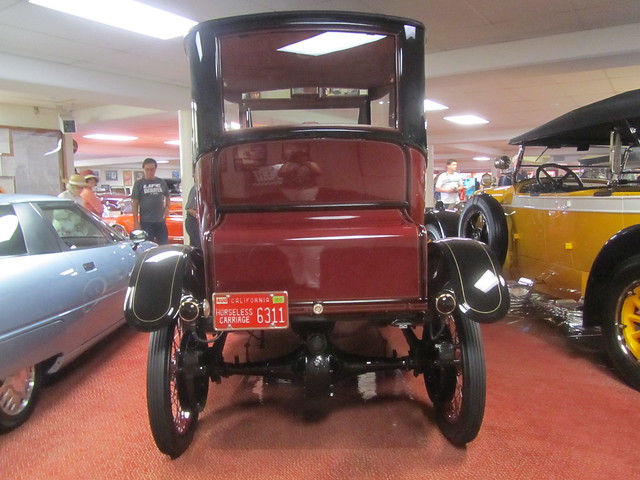
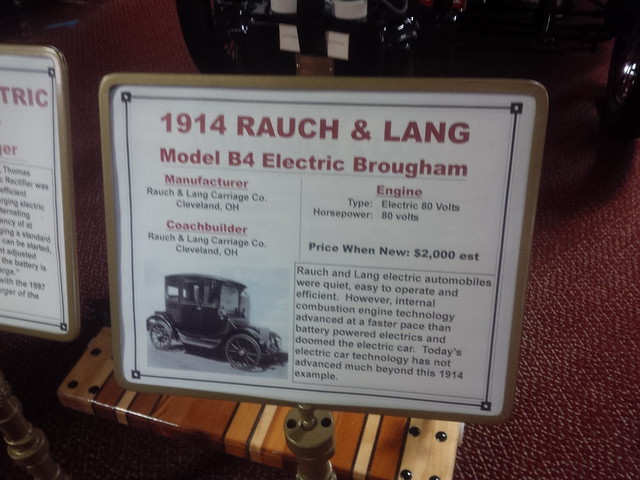
Charger information
Interior
1997 GM EV1
Interior
One of the things that I noticed and would like to draw our attention to is the price of the GM EV1 at the time it was being leased out. Interesting that the price of the GM EV1 was $43,995 and the average car price in the US at the time was $14,000. That means that the EV1 is about 3.14 times the price of the average car.
So, the average car price in 2012 is around $31,000 and the Model S average is around $100,000, that means that the Model S is about 3.22 times the price of the average car. However, considering what you get in a Model S vs. an EV1. However, as was pointed out to me by David Peilow in my post at Speakev.com, “Just shows the jump with the Leaf or Volt in terms of value for money. I wonder how much of that is a reduction in the design price vs benefits of economies of scale, though.”
David’s point is made even clearer when one looks to see what the 2012 Nissan Leaf sold for in 2012. It started at $35,200 before the Federal Tax Credit of $7,500 for the purchase of a battery electric vehicle. So, that’s 1.13 times the amount of the average car without the application of the Federal Tax Credit. If the purchaser in 2012 was eligible for the whole credit, it also means that the Nissan Leaf at that point is 0.89 of the average car price. Food for thought.
The 2012 Chevrolet Volt had a MSRP starting at $39,145 when purchased new. I don’t remember whether it was eligible for the whole $7,500 Federal Credit, but let’s assume that it was. So, looking at the same ratios again. The Volt was 1.26 times the average car before the credit and 1.02 times the average car after the tax credit.
I used 2012 as my figure to compare as it was the easiest recent year for me to find the average car price for. Assuming mild inflation in the averages, it’s even more dramatic to see the drop in MSRP for the 2015 model years of the same two cars that I used for my example. The 2015 Nissan Leaf can now be purchased around $29,010 and the 2015 Chevrolet Volt starts at $34,185 before the tax credit.
It’s interesting that when one looks to the past, it really makes one appreciate what the future holds for us.




